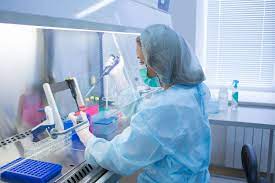Detailed Notes On Houston Heights regenerative medicine
Whether the goal is to replace a failing organ or simply to restore function to a damaged tissue, regenerative medicine offers patients a new way to approach medical treatment. It is a relatively young field of research, but one that holds promise for treating degenerative diseases and congenital abnormalities.
 Regenerative medicine uses the body’s own cells to replace damaged tissues. There are three approaches: tissue engineering, cell-based therapy, and implantation of scaffolds seeded with cells. The first approach involves growing organs and tissues in a laboratory and transplanting them into patients. The second approach involves directing healing cells to an injured site. The third approach involves the implantation of biologically active molecules such as growth factors, cytokines, and chemotherapeutics. If you wish to learn more about this, visit Houston Heights regenerative medicine
Regenerative medicine uses the body’s own cells to replace damaged tissues. There are three approaches: tissue engineering, cell-based therapy, and implantation of scaffolds seeded with cells. The first approach involves growing organs and tissues in a laboratory and transplanting them into patients. The second approach involves directing healing cells to an injured site. The third approach involves the implantation of biologically active molecules such as growth factors, cytokines, and chemotherapeutics. If you wish to learn more about this, visit Houston Heights regenerative medicine
These approaches can be used to treat a wide range of conditions, including injuries, wounds, and congenital abnormalities. Regenerative medicine can help patients to recover quickly and get back to a normal routine. Depending on the type of condition, regenerative medicine therapies can help restore function to the body, accelerate the body’s healing response, and promote new tissue growth.
Stem cell therapy uses specialized cells to replace damaged tissues. The cells are collected from the patient’s bone marrow or fat and injected into the body part that needs repair. The process usually involves little or no pain and should be able to return most patients to their normal activities. In addition, stem cells are capable of directing healing cells to an injured site. Regenerative medicine researchers are learning how to concentrate cells at the site of tissue damage and promote the growth of new tissues.
Another approach is to replace damaged organs with artificial ones. This approach may help alleviate the shortage of organs in hospitals. Regenerative medicine can also help alleviate the problem of organ rejection by providing a new organ that is compatible with the body’s immune system.
Regenerative medicine is also used to help patients recover from chronic conditions. The goal is to return patients to full health. These treatments concentrate the body’s natural healing agents to help promote the growth of new tissues and accelerate the body’s healing response.
The field of regenerative medicine is relatively new and still has a long way to go before it becomes a common treatment option. It is important to continue to explore the mechanisms behind the body’s ability to heal itself. The field of regenerative medicine may one day help to normalize congenital defects, as well as treat other genetic diseases. Regenerative medicine may also complement traditional transplantology in the near future.
Regenerative medicine has made an impact on clinical research. The field is based on stem cell technology and tissue engineering, and has the potential to help treat a wide range of diseases. As with any medical field, more research is necessary to advance the field. Eventually, regenerative medicine may provide a cure for all disease conditions.
The field of regenerative medicine may soon be merged with other fields, such as cellular therapies. These fields have similar goals: they seek to cure diseases by discovering the underlying mechanisms that cause them. The field of regenerative medicine is relatively young and has a long way to go before it is widely used, but it holds the potential to revolutionize medical treatment.